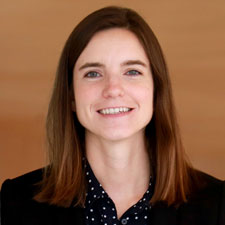Probabilistic Approach to Evaluating Lightning Performance of Transmission Lines
Background CollapseIn Brazil, and more specifically in the State of Minas Gerais, CEMIG (Companhia Energética de Minas Gerais) estimates that between 50 and 70% of unscheduled electric power shutdowns are due to harmful interactions between lightning and transmission lines. Such shutdowns result in a financial loss of 130 – 175 million US dollars per year. Naturally, this is not a particular problem of Brazil but of every continental country, since lightning can strike any overhead transmission line. It is of fundamental importance to develop computational tools that are able to predict, satisfactorily, the lightning performance of the transmission lines (both in the design phase, as in the existing ones).
Impact ExpandBy the end of the project, the antenna of the rectenna will be designed separately from the rectifier circuit by using Computer Simulation Technology (CST) and Advanced Design System (ADS) software to convert a very low input radio frequency (RF) energy (less than −10 dBm) into DC voltage with a high conversion efficiency.
Research Problem Addressed ExpandThis project aims to develop and implement software capable of determining the lightning performance rates of transmission lines and possible alternative techniques to reduce such rates. Given the stochastic character of lightning strikes, the proposed approach has a statistical-probabilistic feature. The performance rates determined by this software are expected to be more realistic (validated by comparison with historical performance data for the lines under study) when compared to rates derived from the application of other software available in literature (such as example, Flash, developed by IEEE). In addition, the software to be developed will be able to indicate optimal alternatives so that the performance rates are reduced.
Supervisors Expand- Dr. Marco Aurélio de Oliveira Schroeder – Professor, Electrical Engineering, Federal University of São João del-Rei (UFSJ)
- Dr. Fernando Aparecido de Assis – Professor, Electrical Engineering, UFSJ
- Dr. Rodolfo Antônio Ribeiro de Moura – Assistant Professor, Electrical Engineering, UFSJ
- Dr. Ali Hooshyar – Assistant Professor, Electrical Engineering, University of Toronto
- Xinyi Yuan, MEng University of Toronto
- Arienne Ferreira, MASc Federal University of São João del-Rei (UFSJ)
- Esdlas Pereira, MASc Federal University of São João del-Rei (UFSJ)
- Alex Coelho, BEng Federal University of São João del-Rei (UFSJ)
- João Neto BEng Federal University of São João del-Rei (UFSJ)
Enhancing the comprehension of graph-based code representations of large-scale industrial control software projects
Background & Research Problem Addressed CollapseThe project targets the challenge of making graphical code representations of large-scale industrial control software projects in the form of nodes and edges that can be understood intuitively by clustering the graph into related parts. Data exchange in combination with metadata from comments and naming conventions is analyzed to identify related functionalities, modules, or company-specific architectural characteristics. This will aid in the assessment and monitoring of large-scale industrial control software.
Impact ExpandAt the end of the project, it is expected that a model will be developed to identify implemented functionalities and coherent modules in graph-based code representations by analyzing metadata from comments and naming conventions in addition to data exchange. The model will visualize and highlight related software parts (e.g., implementing a coherent functionality) and be implemented and tested with sample code that is used for controlling a lab-size demonstrator.
Supervisors ExpandAssistant Professor, Electrical and Computer Engineering at the University of Toronto
Prof. Dr.-Ing., Institute of Automation and Information Systems, technical University of Munich, Germany
Students Expand
- Yufei Ding, M.Eng University of Toronto
- Paul Boulanger, MSc, Technical University of Munich (TUM)
Automated Hardware Design Generation of Biological Neuron Models
Background CollapseThe project lies within the field of Neuromorphic Computing which can be divided into two application areas: Cognitive Computing and Neuroscience Simulation. Cognitive Computing encompasses the areas of Machine Learning and Artificial Neural Networks, which offer brain-inspired solutions for general purpose applications like pattern detection or robotics. The goal of Neuroscience Simulation is to study and understand principles of biological neural networks in the human brain, like cognition and learning. Focusing on the latter, the simulation of natural density networks at high acceleration with respect to real-time requires large amounts of computation. Dedicated hardware accelerators like Spinnaker, BrainScaleS and Loihi are promising platforms in this regard.
Impact ExpandAt the end of the project, solutions would be developed by focusing on analytically solvable neuron models, identifying commonly used ones to derive a common description in C++ that can be translated to hardware by a HLS tool like Vivado HLS. Choosing between different models might be done with simple parameters controlling the design’s functionality, either before hardware synthesis or during runtime. A more advanced solution could be the automated translation of existing descriptions in e.g. C++ or NestML into synthesizable C code for Vivado HLS. Developing these solutions would be useful in the field of robotics and pattern detection.
Research Problem Addressed ExpandOne of the many challenges faced by these accelerators is mapping the various types of neuron models to hardware designs. Finding an efficient and maybe even automatized method of synthesizing designs out of high-level neuron descriptions like in Nest/NestML increases flexibility of future acceleration platforms. Embedding new neuroscience insights concerning neural dynamics into these platforms will then take shorter design cycles than more rigid approaches that employ hard-coded designs.
The wide range of neuron models have varying amounts of complexity, ranging from simple linear differential equations that are analytically solvable to non-linears ones that are not. The key challenge will lie in finding the right trade-off between an easy-to-implement generic method for hardware mapping and the model’s efficiency and speed.
Supervisors ExpandAssistant Professor – Institute of Biomedical Engineering
University of Toronto, Canada

PhD student
Chair of Integrated Digital Systems and Circuit Design
RWTH Aachen, Germany
Students Expand- Zahra (Ava) Razavi Khosravani Nejad, M.Eng, University of Toronto
Visualizing Dependencies and Inconsistencies across Models during Interdisciplinary Engineering Collaboration
Background & Research Problem Addressed CollapseIncreasing interdisciplinarity and complexity of advanced production systems requires an efficient collaboration of stakeholders (e.g., designers, engineers, managers, operators) from different disciplines. In model-based systems engineering, stakeholders address their specific concerns by using models. Popular models include mechanical CAD drawings, Matlab/Simulink models, planning charts and diagrams, etc. The more models collaborate, the more difficult to maintain the data dependencies. Consequently, inconsistencies can occur among models, from tiny biases of attributes, incompatible interfaces to conflicting designs that lead to expensive project failures. Therefore, an early detection and management of model dependencies and potential inconsistencies is crucial for project success.
Impact ExpandIn the collaboration with the faculty partners from University of Toronto, we aim to develop and evaluate an interactive visualization method, which can efficiently assist stakeholders in capturing, understanding and handling critical dependencies across models in an interdisciplinary and collaborative development process.
Supervisors Expand
Professor, Mechanical Engineering
University of Toronto, Canada

Assistant Professor, Mechanical Engineering
University of Toronto, Canada

Prof. Dr.-Ing., Institute of Automation and Information Systems, Technical University of Munich, Germany
Students Expand- Haya Elaraby, M.Eng University of Toronto
- Xintong He, BSc Technical University of Munich (TUM)
Machine Learning Approach for Modular Assembly Planning in Large-Scale Products
Background Collapse
Assembly planning for large-scale products (e.g. shipbuilding, chemical plants or construction industry) demands highly individual and manual effort. Experts take decisions on modularization or building stages based on complex 3D-Models to slice the product in manageable objects. Furtherly detailed assembly sequencing tasks are executed to target a just-in-time scheduling for each module. The orchestration of multiple involved companies with continuously changing schedules is a cognitively demanding job. The decision-making process on dividing the final product in smaller pieces is influenced by multiple factors like geometric feasibilities, interfaces between modules, resource capabilities, internal and external schedules etc.
Current research in assembly planning is focusing on developing algorithmic decision support systems. These systems are mainly focusing on optimization problems in programmatic scheduling, either on high level for the overall project or on low level for sequencing tasks within a module. On the other hand, unsupervised learning techniques evolve rapidly to identify patterns and clusters in complex data structures. Applying these techniques to the modularization problem of large-scale products can be beneficial for a profound decision-making process. The automatic clustering is a promising approach to fill the gap between high and low level scheduling problems and thus is the basis for a hierarchical job scheduling approach.
Research Problem Addressed ExpandThe process of slicing complex 3D-Models into manageable assembly modules or stages is a highly cognitively demanding job. Small errors during this early planning phase can cause project delays, increased costs and decrease of quality. Unsupervised learning techniques promise an algorithmic approach to face these challenge considering multiple influential factors at the same time.
Proposed Solution(s) ExpandThe goal is to develop a software-tool that makes suggestions for dividing complex large-scale products into manageable modules, considering multiple restrictions. The tool should be able to read and analyse CAD-files. Open-source CAD libraries or APIs of commercial CAD software offer a high flexibility to programmatically analyse large assemblies in 3D. Clustering algorithms from unsupervised learning techniques can be applied to allocate single parts to reasonable subassembly modules. Further restrictions and constraints (e.g. the minimization of geometrical interfaces between modules) can be additionally implemented with heuristic local search approaches. Furthermore, schedules and resource capabilities for executing assembly tasks can be considered in a hierarchical manner, either on high- or low-level task descriptions.
Supervisors Expand
Professor, Mechanical & Industrial Engineering
University of Toronto, Canada

Research Associate, Model-Based Systems Department
RWTH Aachen, Germany
Students ExpandCassava-Biogas Anaerobic Digester Design
Background CollapseIn the 2020-21 academic year, a joint team of students from the University of Toronto and Covenant University worked on developing a process for the anaerobic digestion of cassava waste into a biogas, for the community of Owode, Nigeria. The project is difficult in that the location does not have the basic infrastructure (steam, electricity, etc.) that would be available for a North American installation. The team designed pilot sized reactors, procured the components, built and operated the reactors making biogas. Further, the team has met with the local community and resolved many of the local installation issues.
The anaerobic digestion of biomass is well studied. The project for the local usage of cassava waste is continuing. A by-product of anaerobic digestion is a highly nutritious digestate that can be used as a fertilizer. Current fertilizers are chemically manufactured and tailored to have certain NPK values; these are imported into west Africa. Chemical fertilizers have been an industry standard over the past couple decades; however, with issues related to fertilizer run-off, there is a need to investigate a more sustainable form of fertilizer.
Research Problem Addressed ExpandThe focus of this project is on assessing the effectiveness of digestate to improve crop yields native to Nigeria. Some of the key investigations include:
- Different sources of biomass, which have different chemical compositions and seasonality
- Different methods of post – processing the digestate
- Investigating the consequence & likelihood of fertilizer run-off when comparing chemical to organic fertilizers (larger picture would be environmental impact & LCA of organic vs chemical)
- Comparing effectiveness/ impact on crop yield of chemical vs organic fertilizer via lab tests
Key milestones include:
- Acquiring data about the impact of different fertilizers on crop yield
- Acquiring data on digestate NPK values and micronutrient profiles
The team will investigate several different biomass sources, and estimate the volume and composition of the digestate, both solid and liquid portions. As the digestate is produced from an anaerobic system, the team will need to design the equipment and process for removing the digestate from the reactor, and then handling the digestate in a safe fashion (the digestate will be saturated with flammable gases, as well as volatile sulfur species). The team will design a process, and equipment, to add the digestate to growing crops, given the lack of mechanized equipment.
Supervisors Expand

Professor, Chemical Engineering
University of Toronto, Canada

Professor, Civil and Environmental Engineering
Covenant University, Nigeria
Students ExpandDevelopment of an Information Collection System in Crop Area to Apply Precision Agriculture Techniques using Digital Image Processing
Background CollapseFor thousands of years, the processes related to sowing and harvesting have involved many humans, economic and social resources. This has triggered the emergence of other areas of knowledge such as precision agriculture that, through the use of electronic equipment capable of capturing images in real-time and subsequent digital processing, help to detect possible production problems by characterizing the quality of the land and Harvest.
Research Problem Addressed ExpandThe proposed research project aims to design and implement a system based on digital image processing in order to generate alternative solutions to agricultural needs in the technological and scientific context in collaboration with the University of Toronto.
Proposed Solution(s) ExpandTo this end, the project aims to recreate specific pre-existing systems of digital image processing that solve or improve the procedures for collecting information, data processing, and obtaining results in the areas of agriculture. Moreover, the results obtained in the recreation stage will be analyzed to identify the factors that can be improved and optimized in developing new applications. All electronic devices and applications based on digital image processing and artificial vision will be developed, applied, and validated by researchers and thesis students from ESPOCH and the University of Toronto.
General Objective: Implement devices for the acquisition of images in precision agriculture for the application of crop analysis algorithms through the use of digital image processing
Specific Objectives
- Develop a state of the art of previous precision agriculture techniques using digital image processing
- Determine the health status of a crop area
- Delimit areas of interest within the same image
Professor, Civil and Mineral Engineering
University of Toronto, Canada
Professor, Electronic Engineering
ESPOCH, Ecuador
Students Expand


 Dr. Bryan Karney
Dr. Bryan Karney Dr. Hugo Moreno
Dr. Hugo Moreno